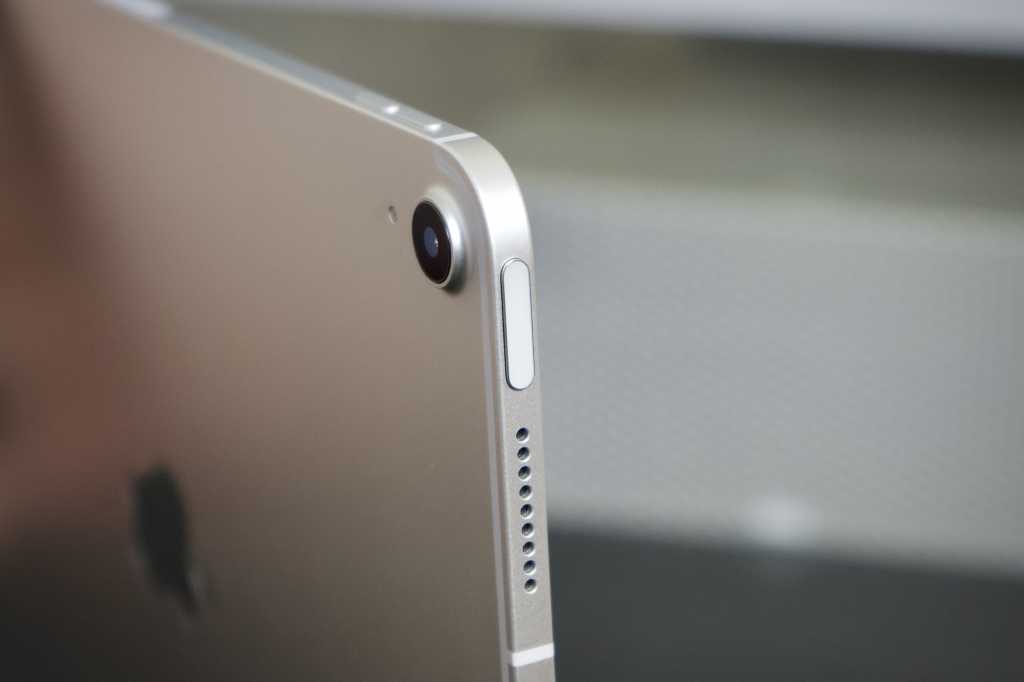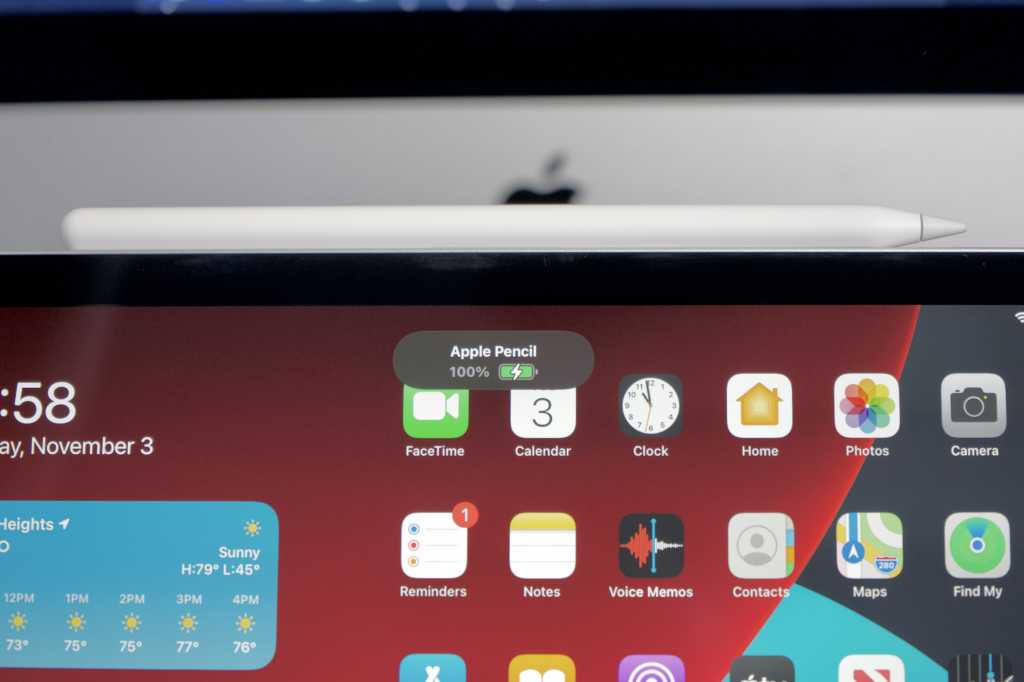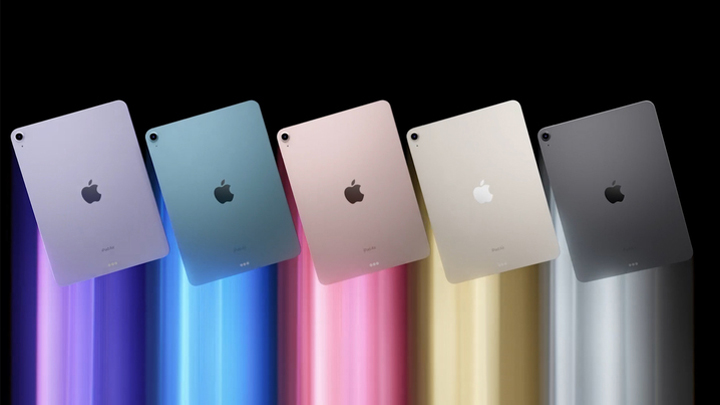If you want an iPad, you have three basic choices: the basic 10.2-inch iPad, the more expensive iPad Air, or the even more expensive iPad Pro. The standard 10.2-inch iPad is the budget option, with an aging design (big bezels, home button, Lightning port) and older processor, and the 12.9-inch iPad Pro starts at a whopping $1,099 and is geared toward only the most demanding of users.
So if you want the most tablet without breaking the bank on a $1,099 12.9-inch iPad Pro, you have just two options: the $599 iPad Air and the $799 11-inch iPad Pro. The iPad Air was just upgraded with an M1 processor, making it as powerful as the iPad Pro. But a tablet is more than its processor, and the Pro model does offer a few improvements that might be worth your money. Here’s how these two tablets stack up.
11-inch iPad Pro vs iPad Air: Tech specs
Before we start the matchup, let’s have a weigh-in and see how they match up on paper.
| iPad Air (2022) | 11-inch iPad Pro (5th gen) |
|
|---|---|---|
| Starting price | $599 | $799 |
| Screen size | 10.9-inch | 11-inch |
| Size (H x W x D) |
9.74 x 7.02 0.24 inches | 9.74 x 7.02 x 0.23 inches |
| Weight | 1.02 pounds | 1.03 pounds |
| Colors | Space gray, pink, purple, starlight, blue | Silver, space gray |
| Display | Liquid Retina, True Tone |
Liquid Retina, ProMotion, True Tone |
| Processor | M1 | M1 |
| Storage | 64/256GB | 128/256/512GB/1TB/2TB |
| Memory | 8GB | 8GB/16GB (1TB and 2TB) |
| Authentication | Touch ID | Face ID |
| Rear camera | 12MP f/1.8 Wide | 12MP f/1.8 Wide 10MP f/2.4 Ultra Wide |
| Front camera | 12MP f/2.2 Ultra Wide | 12MP f/2.4 Ultra Wide |
| Wireless features | 5G (sub-6 only), Wi-Fi 6, Bluetooth 5.0 | 5G (sub-6/mmWave), Wi-Fi 6, Bluetooth 5.0 |
11-inch iPad Pro vs iPad Air: Design and color
The iPad Air and 11-inch iPad Pro are essentially the same size and weight. In fact, the dimensions are so similar that they can both use most of the same cases, covers, Magic Keyboards, and so on. Only cases that have specific camera cutouts for the single iPad Air camera won’t fit on the iPad Pro, which has a squarish camera area with multiple cameras, but iPad Pro cases will fit fine on the Air (they just look a little weird).
With nearly identical shapes, they also have nearly identical designs with one main exception: color. The iPad Pro comes in silver and space gray only, while the iPad Air has a more whimsical array of colors to choose from: space grey, starlight, pink, purple, and blue. You’re also getting ever-so-slightly smaller bezels on the iPad Pro, which is why Apple says it has room for an 11-inch display instead of 10.9 inches. You’re not really going to notice that tenth of an inch, though.
Our pick: When it comes to size and weight, this is a complete tie. The designs are basically identical as well. So it comes down to color. If you want starlight, blue, purple, or pink, you’ll need to get the Air.

Apple
11-inch iPad Pro vs iPad Air: Display
The 11-inch iPad Pro has a slightly bigger display than the iPad Air. We’re really splitting hairs here—it’s one-tenth of an inch. The resolution is the same—264 pixels per inch—but the iPad Pro has just slightly slimmer bezels around the display, giving it room for a few more pixels. Both displays also have True Tone and a wide P3 color gamut and follow Apple’s “liquid” retina design, meaning the corners of the screen are rounded to match the device itself.
The iPad Pro’s display is definitely superior, though. It’s brighter, with a max brightness of 600 nits compared to the Air’s 500 nits. But the big benefit is ProMotion, which lets the display run-up to 120Hz for smoother motion and lower latency, especially when using the Apple Pencil. The difference is palpable when switching between devices, and once you’ve tried the Pro, it’s very hard to go back.
Our pick: The extra brightness isn’t a huge deal, but ProMotion is really nice and helps justify the higher price of the iPad Pro.
11-inch iPad Pro vs iPad Air: Performance and memory
With the latest update (available March 18, 2022), the iPad Air has the same M1 processor as the iPad Pro. It’s got eight CPU cores, eight GPU cores, and in almost all respects should offer exactly the same performance.
There’s only one small difference. Both tablets have 8GB of RAM, with the exception of the 1TB and 2TB storage options on the iPad Pro. If you opt for one of those configurations, the iPad Pro will have 16GB of RAM. Those storage options don’t come cheap, however, and the extra RAM probably isn’t going to make much of a difference with iPadOS.
Our pick: It’s a tie. It’s the same processor, and to get 16GB of RAM you need to pay for a huge chunk of storage on the iPad Pro. You’re not likely to notice the difference between 8GB and 16GB anyway, even in very intensive applications.

Apple
11-inch iPad Pro vs iPad Air: Battery
The battery capacity is nearly the same in both iPads, around 29 watt-hours. Apple lists similar battery life specs: Up to 10 hours of surfing the web on Wi‑Fi or watching videos, nine hours when on cellular (iPads rarely stray from these numbers). ProMotion can be a battery drain while in use, but can save battery when in some cases where the iPad can switch to a much lower refresh rate. On the other hand, the iPad Pro’s brighter display will likely drain the battery a little faster if you crank up the brightness.
Our pick: Either tablet will last you through hours and use. For the most part, we expect battery life to be similar.
11-inch iPad Pro vs iPad Air: Storage
The iPad Pro gives you double the starting storage: 128GB instead of 64GB in the iPad Air. Both offer a 256GB upgrade configuration ($100 more on the iPad Pro and $150 more on the iPad Air), but while the iPad Air stops there, the iPad Pro offers 512GB, 1TB, and 2TB options.
Our pick: With all the cloud storage and streaming these days, most users don’t need more than 256GB of storage in an iPad, but if you do lots of work with 4K video or high-res photos, the option for higher storage is nice. More important is that the starting storage is twice as big on the iPad Pro, and 64GB might be a little small for all of the apps and games you’re going to download.
11-inch iPad Pro vs iPad Air: Face ID vs Touch ID
Like the iPhone, the iPad Pro uses Face ID, which uses the TrueDepth sensors on the front to unlock the tablet and authenticate purchases and passwords. The iPad Air doesn’t have a TrueDepth module; it has Touch ID built into the side button. Both are easy to set up and use in their own way, but Apple says the odds of spoofing Face ID is approximately 1 in 1,000,000 vs 1 in 50,000 for Touch ID.
Our pick: Touch ID is plenty good, but there’s no doubt that Face ID is usually the faster and easier way to authenticate, enter passwords, and unlock your device.

Jason Cross/IDG
11-inch iPad Pro vs iPad Air: Cameras
On the rear of the iPad Air, you’ll find a 12MP standard wide-angle camera. On the iPad Pro you’ll find the same camera, plus a 10MP Ultra Wide camera and a LiDAR sensor for better AR positioning. We don’t think you’ll be taking too many pictures with either of these somewhat awkward cameras, but if you want to, the iPad Pro has a clearly superior array.
Apple upgraded the iPad Air to a 12MP Ultra-Wide camera on the front, with support for Center Stage, which pans and zooms to keep you the subject (you) in the frame. So the front camera is virtually identical between the two tablets. The iPad Pro has a TrueDepth sensor for Face ID, which means it also supports Apple’s Animoj/Memoji, but photo and video-taking should be about the same when using the front camera.
Our pick: The front camera is the more important on a tablet, and the two here are virtually identical, as is the rear-facing 12MP camera. The iPad Pro has an edge with its 10MP Ultra Wide rear camera if that sort of thing matters to you.
11-inch iPad Pro vs iPad Air: Audio and microphones
The iPad Air has decent sound from its two-speaker stereo setup and a dual microphone array. It works fine, but it’s nothing special. The 11-inch iPad Pro, on the other hand, has four speakers and five microphones that Apple calls “studio quality.” We don’t know if we trust that moniker, but it’s almost certain that the iPad Pro will produce better recordings and higher-quality audio playback.
Our pick: The iPad Pro should bring superior sound playback and recording.
11-inch iPad Pro vs iPad Air: Connectivity and accessories
We love the iPad Air’s USB-C port, and it’s event fast with the fifth-generation model, supporting data transfers up to 10Gbps. But the 11-inch iPad Pro takes it a step further. Its USB-C port supports USB4 and Thunderbolt, which means a faster maximum throughput of 40Gbit/sec. Both support a single external display up to 6K, though. Both models support the new Magic Keyboard—though the camera cutouts fit a little nicer on the 11-inch Pro—as well as the 2nd-generation Apple Pencil.
Our pick: Thunderbolt might not be something you need now, but it might be worth the investment. Over the years, there’s a much better chance that the devices you buy will work to their full potential (or at all) with the iPad Pro’s Thunderbolt port over the iPad Air’s standard USB-C charging port. If you’re primarily concerned about hooking up displays, the experience should be similar with either one.

Jason Cross/IDG
11-inch iPad Pro vs iPad Air: Wi-Fi and cellular
Both iPads have Wi-Fi 6 with MIMO, simultaneous dual-band, and speeds up to 1.6Gbps, so they’ll work great at home. You also get Bluetooth 5 for AirPods and other wireless devices. But if you opt for the Wi-Fi + Cellular model, there’s a small difference. Both models also have 5G options, but the iPad Air only supports sub-6GHz bands while the iPad Pro supports the faster short-range mmWave bands as well. The cellular option costs more on the iPad Pro ($200) than on the iPad Air ($150).
Our pick: You should consider carefully whether you really need cellular access on your iPad—using your iPhone as a wireless hotspot works extremely well. The iPad Pro’s ability to connect to mmWave networks is of limited use and you pay $50 more for cellular than you do on the iPad Air.
11-inch iPad Pro vs iPad Air: Conclusion
Last year, we thought the 11-inch iPad Pro was the better buy. This year, thanks to the processor upgrade and improved front camera in the iPad Air, our opinion has reversed. The iPad Pro is essentially the same size and performance and supports the same peripherals, but it costs $200 more ($250 more if you want a cellular-equipped model). For that, you get:
- ProMotion display
- Five-microphone array and four speakers
- 10MP Ultra Wide rear camera with LiDAR
- Thunderbolt
- Face ID
- Double the storage
- Support for mmWave 5G bands
Our pick: Most of those improvements are not the sort of things you’ll feel every day. ProMotion is the biggest benefit, and the extra storage is nice, but they don’t seem worth an extra $200. We think most users would be happiest with the iPad Air, perhaps with the 256GB option (which is still $50 less than the starting price of the 128GB 11-inch iPad Pro).
from Macworld.com https://ift.tt/bdvauCk
via IFTTT

